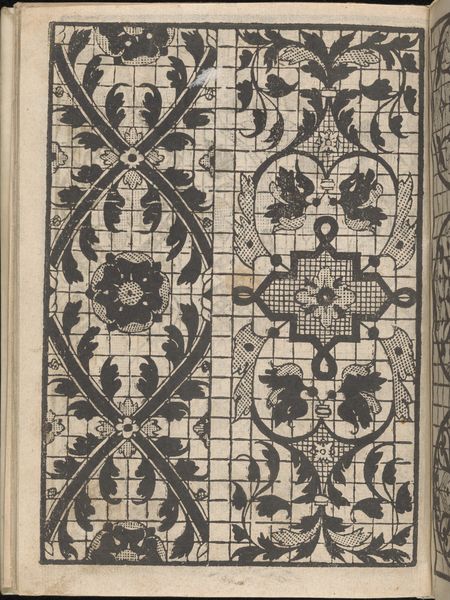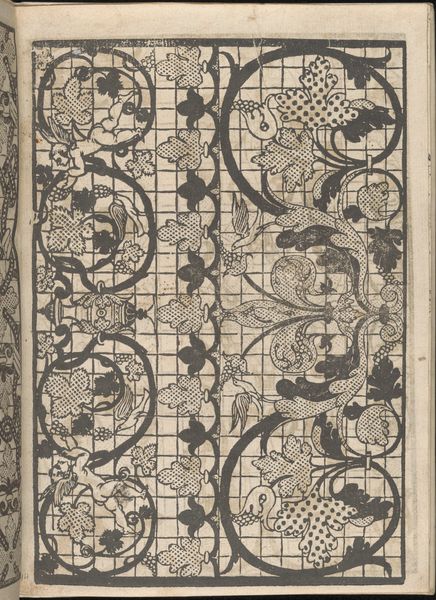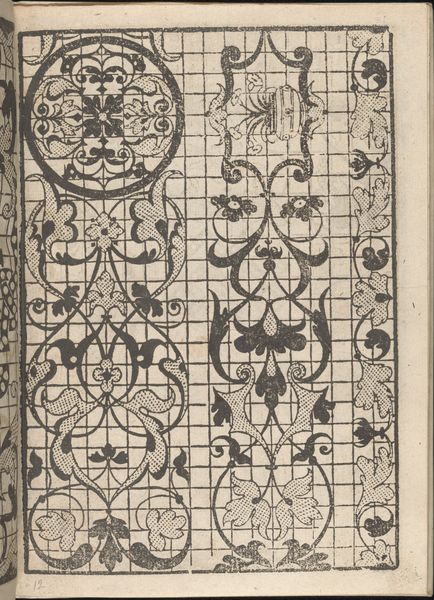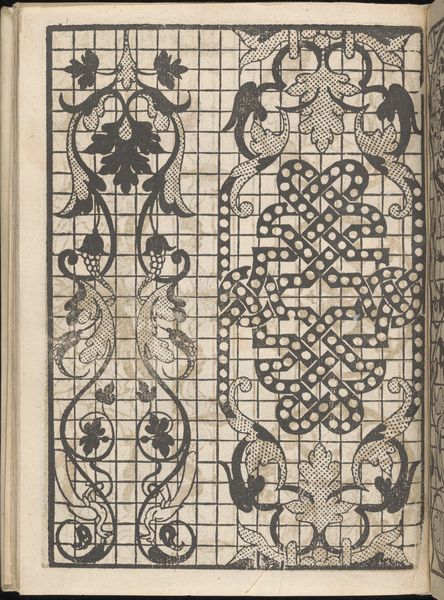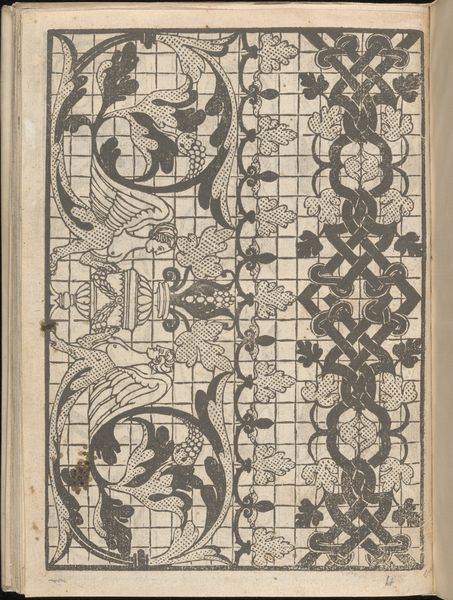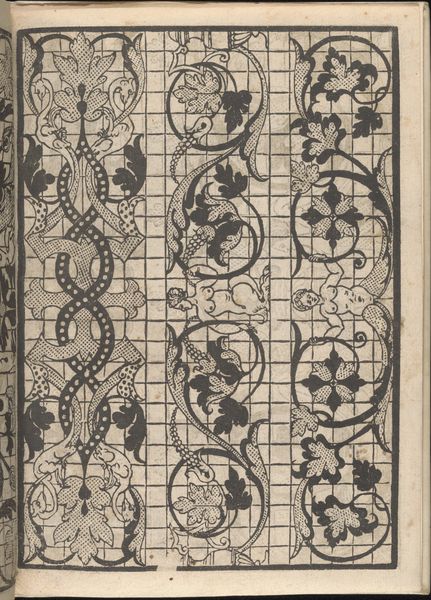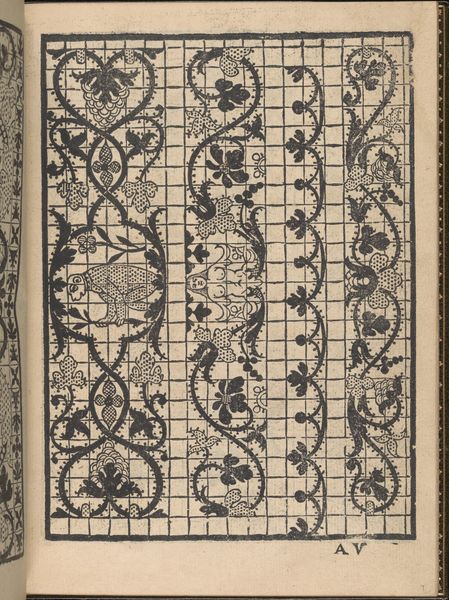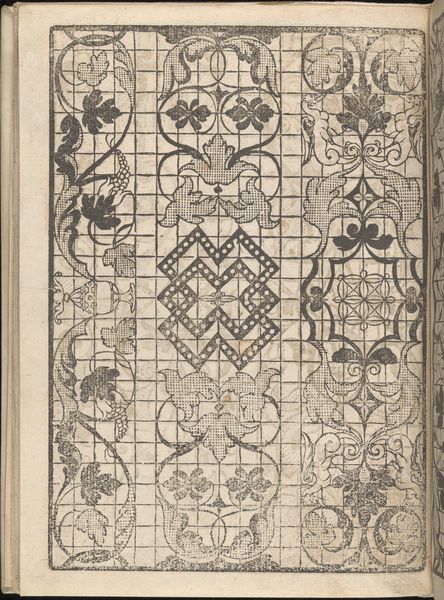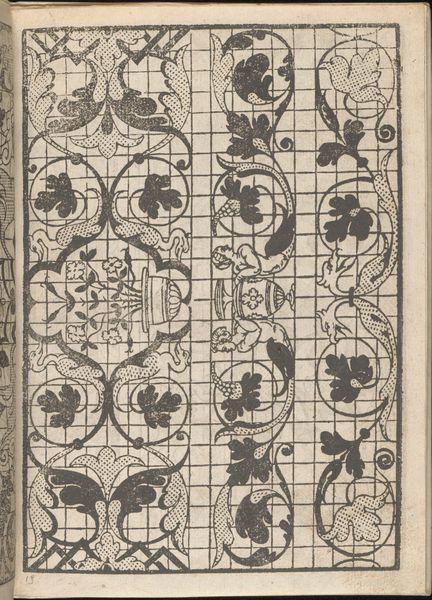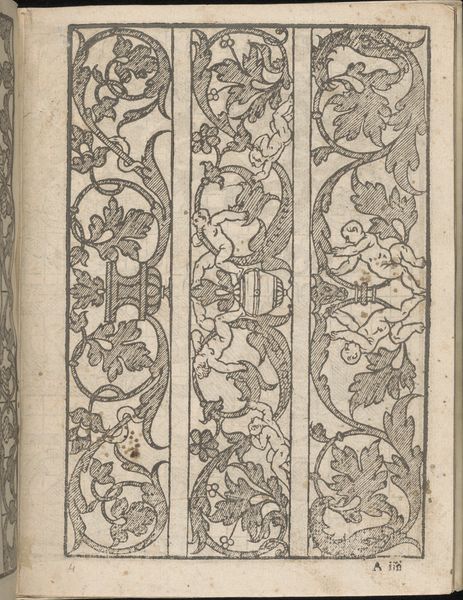
Splendore delle virtuose giovani, page 15 (verso) 1564
0:00
0:00
drawing, print
#
drawing
#
medieval
#
pen drawing
# print
#
book
#
geometric
#
decorative-art
Dimensions: Overall: 7 1/2 x 5 1/2 in. (19 x 14 cm)
Copyright: Public Domain
Editor: Here we have page 15 verso from "Splendore delle virtuose giovani," dating back to 1564 by Iseppo Foresto. It's a print, showcasing rows of ornate, decorative patterns. The grid underneath everything is really interesting, but also a little bit distracting. What is the story behind this piece? Curator: This page offers insight into the lives of young women during the Renaissance and the prevailing societal expectations surrounding them. It wasn't created as "art" in the modern sense. The "Splendore delle virtuose giovani," or "Splendor of Virtuous Young Women," was actually a pattern book. Editor: A pattern book? So like, a design catalogue? Curator: Exactly. These patterns were primarily intended for needlework and other domestic crafts. The patterns exemplify idealized notions of femininity prevalent during that era. Think about it – the intricate designs, the emphasis on detail and skill, all reflecting the virtues of patience, diligence, and refinement that were highly valued in women. Editor: That’s fascinating. So it’s less about personal artistic expression and more about reinforcing social norms? Curator: Precisely. Consider the socio-political context of the 16th century. Women's roles were largely confined to the domestic sphere. Books like these subtly reinforced those boundaries, channeling their creativity and skills into socially acceptable outlets. The grid structure you pointed out facilitated the faithful reproduction of these patterns onto fabric, standardizing expectations. It's also interesting to consider who had access to these books. Did the women depicted ever own them, or was it for the merchant class, commissioning their clothes? Editor: Wow, I hadn’t thought about it that way. So, this wasn't just a collection of pretty patterns; it was also a tool for social conditioning. That really shifts how I see the image. Curator: Indeed. By examining seemingly simple decorative patterns, we gain a richer understanding of the complex interplay between art, gender, and power in the Renaissance.
Comments
No comments
Be the first to comment and join the conversation on the ultimate creative platform.
